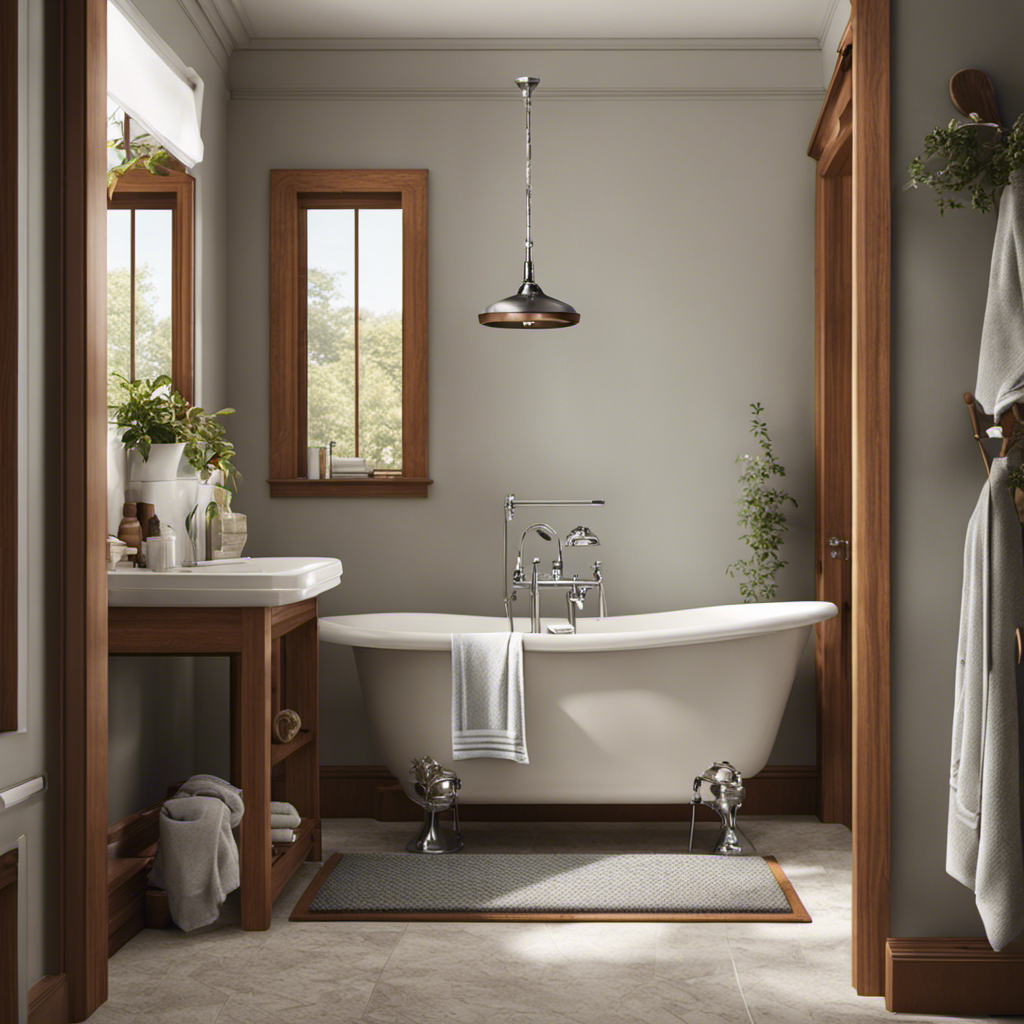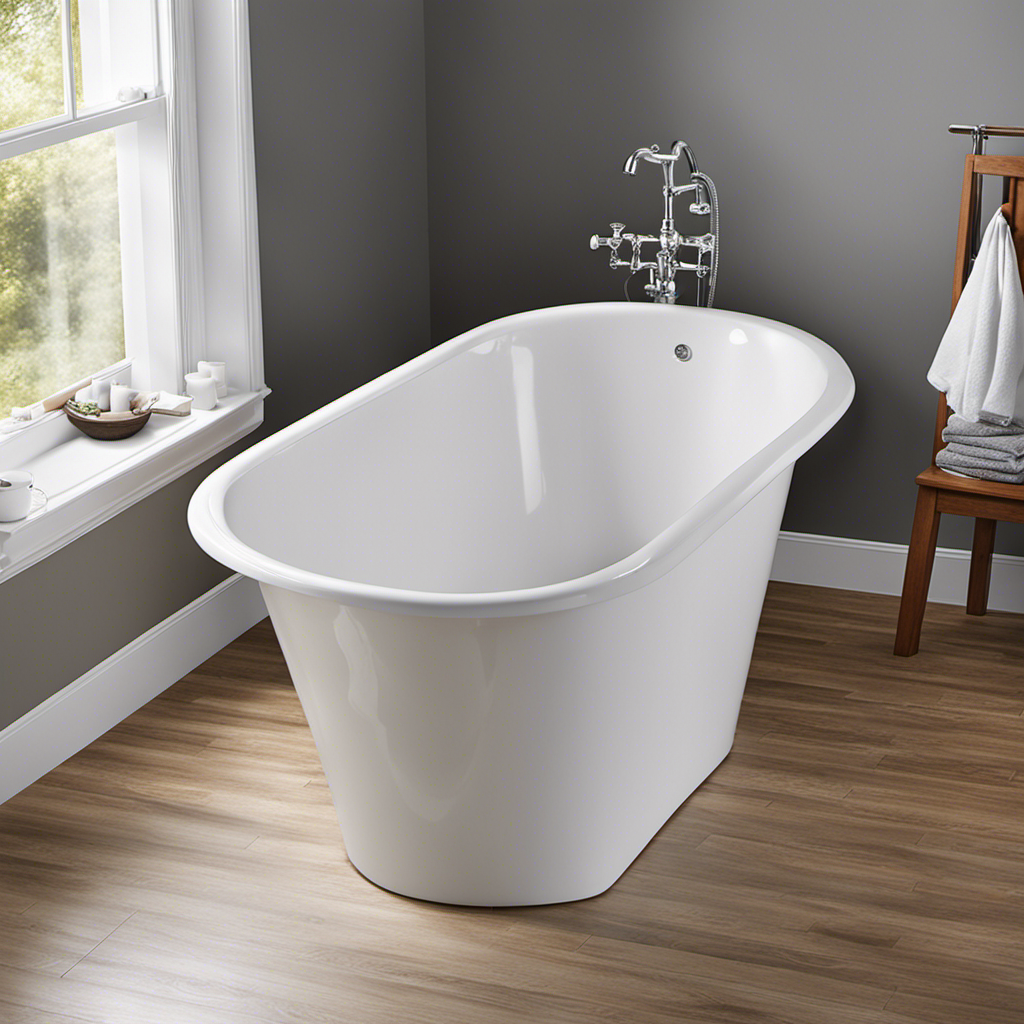As I reach the milestone of 60 years old, I find myself seeking new ways to navigate daily tasks with ease and safety. One area of concern is getting out of the bathtub safely, as mobility limitations become more apparent.
In this article, I will share practical tips and techniques for ensuring a secure exit from the tub. By assessing our limitations, installing grab bars, using assistive devices, and implementing proper body mechanics, we can maintain our independence and enjoy a relaxing bath without worry.
Let’s dive in!
Key Takeaways
- Assess potential hazards in the bathroom and address them to ensure safe movement and mobility
- Install grab bars or transfer benches to provide support and stability while getting in and out of the bathtub
- Seek professional advice from a physical or occupational therapist for personalized recommendations on bathroom safety
- Consider alternative bathing options such as walk-in bathtubs or shower chairs to reduce the risk of slips and falls and enhance safety and comfort.
Assessing Your Mobility Limitations
You need to start by assessing your mobility limitations before trying to get out of the bathtub safely. It is important to identify any potential hazards that may hinder your ability to move around freely and safely.
For example, if you have difficulty standing for long periods of time or have balance issues, it may be necessary to install grab bars or a transfer bench in your bathtub. These modifications can provide the necessary support and stability you need to safely enter and exit the tub.
Additionally, seeking professional advice from a physical therapist or occupational therapist can be beneficial in determining the best strategies and equipment to improve your mobility in the bathroom. They can assess your specific limitations and recommend appropriate solutions to ensure your safety and independence.
Installing Grab Bars for Added Safety
Installing grab bars can provide added safety when exiting the bathtub. As someone who wants to maintain their independence and safety, I understand the importance of choosing the right grab bar design.
There are various options available, including straight bars, angled bars, and suction cup bars. It is crucial to select a design that suits your needs and preferences, as well as meets safety standards.
When installing grab bars, it is essential to avoid damaging your bathroom decor. One option is to choose grab bars that can be mounted with screws, ensuring a secure and long-lasting installation. Alternatively, there are grab bars available that use adhesive pads, providing a strong hold without damaging the walls.
Using Assistive Devices for Support
To ensure your safety and stability, consider using assistive devices such as grab bars or shower chairs while bathing. These devices can greatly enhance your bathing experience and make it safer for you to navigate in and out of the bathtub.
Adapted seating, like a shower chair, provides a stable and secure surface for you to sit on while bathing. This eliminates the need to stand for an extended period of time and reduces the risk of slipping or falling.
Additionally, hand-held showerheads allow you to easily direct the water flow, making it easier to clean hard-to-reach areas. By incorporating these assistive devices into your bathing routine, you can maintain your independence and reduce the risk of accidents.
Now, let’s explore implementing proper body mechanics for safe maneuvering.
Implementing Proper Body Mechanics for Safe Maneuvering
By using proper body mechanics, it’s important to remember to engage your core muscles and lift with your legs when moving in and out of the bathtub. This will help prevent strain and injury to your back and joints.
In addition to these techniques, incorporating stretching exercises into your daily routine can also improve your flexibility and make getting in and out of the bathtub easier. Stretching exercises such as hamstring stretches, calf stretches, and hip flexor stretches can help increase your range of motion and reduce muscle stiffness.
Furthermore, here are some safety tips to keep in mind when maneuvering in the bathtub: always use grab bars for support, place non-slip mats on the floor of the tub, and consider installing a bathtub transfer bench for added stability.
Exploring Alternative Bathing Options
Consider trying a walk-in bathtub or a shower chair as alternative bathing options to improve your bathing experience.
Walk-in showers provide easy accessibility, eliminating the need to step over high tub walls. They have low thresholds, allowing you to enter and exit without any hassle. Additionally, walk-in bathtubs come with built-in handrails for added stability and safety.
Shower chairs, on the other hand, provide a seated bathing experience, reducing the risk of slips and falls. They are equipped with non-slip feet and adjustable heights to accommodate individual needs.
These bathing aids can greatly enhance your bathing routine, making it more comfortable and secure. So, why not give them a try and enjoy a safer and more enjoyable bathing experience?
Frequently Asked Questions
How Can I Prevent Slipping and Falling in the Bathtub?
To prevent slipping and falling in the bathtub, I use bathtub safety products like non-slip mats and grab bars. They provide stability and support, making it easier and safer for me to get out of the tub.
Are There Any Specific Exercises or Stretches I Can Do to Improve My Mobility for Getting in and Out of the Bathtub?
To improve mobility for getting in and out of the bathtub, I recommend doing exercises and stretches that target the muscles used for these movements. This will help prevent slipping and falling, ensuring safety in the bathroom.
What Should I Do if I Don’t Have the Option to Install Grab Bars in My Bathroom?
If I can’t install grab bars in my bathroom, there are alternative options for safe bathtub exits. I can modify my bathroom by using a bathtub transfer bench, a bathtub step, or a portable grab bar.
Are There Any Specific Types of Assistive Devices That Are Recommended for Getting in and Out of the Bathtub?
There are various assistive devices that can enhance bathtub safety. These devices, such as grab bars and bathtub transfer benches, provide support and stability when getting in and out of the tub.
Can I Still Take a Bath Safely if I Have Limited Mobility and Cannot Use the Bathtub?
Yes, there are alternative bathing options available if I have limited mobility and cannot use the bathtub. I can consider using bath chair alternatives or explore other options like shower seats or walk-in showers.
Conclusion
As I step out of the warm embrace of the bathtub, I am reminded of the importance of maintaining my independence and safety as I age.
Assessing my mobility limitations and taking proactive steps to address them, such as installing grab bars and using assistive devices, has allowed me to navigate this everyday task with confidence.
By implementing proper body mechanics and exploring alternative bathing options, I have found a way to gracefully rise above the challenges that come with age.
So remember, my fellow bathers, with a little planning and a lot of determination, we can conquer any obstacle that comes our way.










